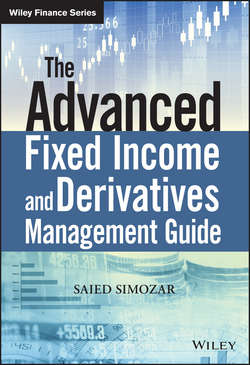Читать книгу The Advanced Fixed Income and Derivatives Management Guide - Saied Simozar - Страница 8
На сайте Литреса книга снята с продажи.
Foreword
ОглавлениеIn 1998, shortly after arriving at Putnam Investments, Saied Simozar began work on a model for the term structure of interest rates that was to become a cornerstone of an entire complex of portfolio management tools and infrastructure. It was fortuitous timing because that rate model had the dual benefits of being derived through current market pricing structure (rather than historical regressions) and the flexibility to quickly incorporate new security types.
The late 1990s marked something of a sea change in the fixed income markets. The years leading up to that period had been defined by big global themes and trends like receding global inflation rates and the development of out of benchmark sectors like high yield corporate bonds and emerging market debt, as well as global interest rate convergence under the nascent stages of European Monetary Union. Under these broad trends, return opportunities, portfolio positioning, and risk could easily be characterized in terms of duration and sector allocation percentages.
Much of that changed in 1998 when the combination of increasingly complex security types, rapid globalization of financial markets, and large mobile pools of capital set the stage for a series of rolling financial crises that rocked global financial markets and eventually led to the collapse of one of the most sophisticated hedge funds of that era – Long Term Capital Management. In the aftermath, it became clear that traditional methods of monitoring portfolio positioning and risk were insufficient to manage all the moving parts in modern fixed income portfolios.
Fortuitously, that term model (and the portfolio management tools built around it) allowed Putnam to effectively navigate through that financial storm. Perhaps more importantly, it provided the basis for an infrastructure that could easily adapt and change with the ever evolving fixed income landscape. Today, while many of the original components of that infrastructure have been augmented and updated, the basic tenants of the philosophical approach remains in place.
In his book, Saied lays out a blueprint for a set of integrated tools that can be used in all aspects of fixed income portfolio management from term structure positioning, analysis of spread product, security valuation, risk measurement, and performance attribution. While the work is firmly grounded in mathematical theory, it is conceptually intuitive and imminently practical to implement. Whether you are currently involved in the management of fixed income portfolios or are looking to get a better understanding of all the inherent complexities, you won't find a more comprehensive and flexible approach.
D. William Kohli
Co-Head of Fixed Income
Putnam Investments
